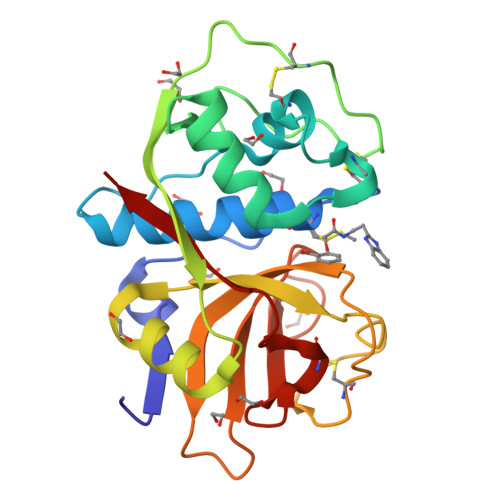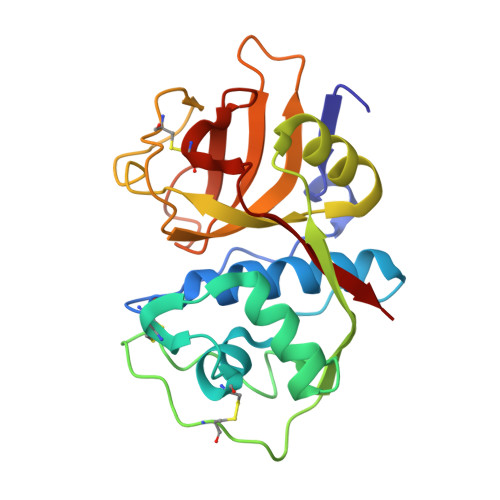Complementarity between a docking and a high-throughput screen in discovering new cruzain inhibitors.
Ferreira, R.S., Simeonov, A., Jadhav, A., Eidam, O., Mott, B.T., Keiser, M.J., McKerrow, J.H., Maloney, D.J., Irwin, J.J., Shoichet, B.K.(2010) J Med Chem 53: 4891-4905
- PubMed: 20540517
- DOI: https://doi.org/10.1021/jm100488w
- Primary Citation of Related Structures:
3KKU - PubMed Abstract:
Virtual and high-throughput screens (HTS) should have complementary strengths and weaknesses, but studies that prospectively and comprehensively compare them are rare. We undertook a parallel docking and HTS screen of 197861 compounds against cruzain, a thiol protease target for Chagas disease, looking for reversible, competitive inhibitors. On workup, 99% of the hits were eliminated as false positives, yielding 146 well-behaved, competitive ligands. These fell into five chemotypes: two were prioritized by scoring among the top 0.1% of the docking-ranked library, two were prioritized by behavior in the HTS and by clustering, and one chemotype was prioritized by both approaches. Determination of an inhibitor/cruzain crystal structure and comparison of the high-scoring docking hits to experiment illuminated the origins of docking false-negatives and false-positives. Prioritizing molecules that are both predicted by docking and are HTS-active yields well-behaved molecules, relatively unobscured by the false-positives to which both techniques are individually prone.
Organizational Affiliation:
Graduate Program in Chemistry and Chemical Biology, University of California San Francisco, California 94158, USA.





















